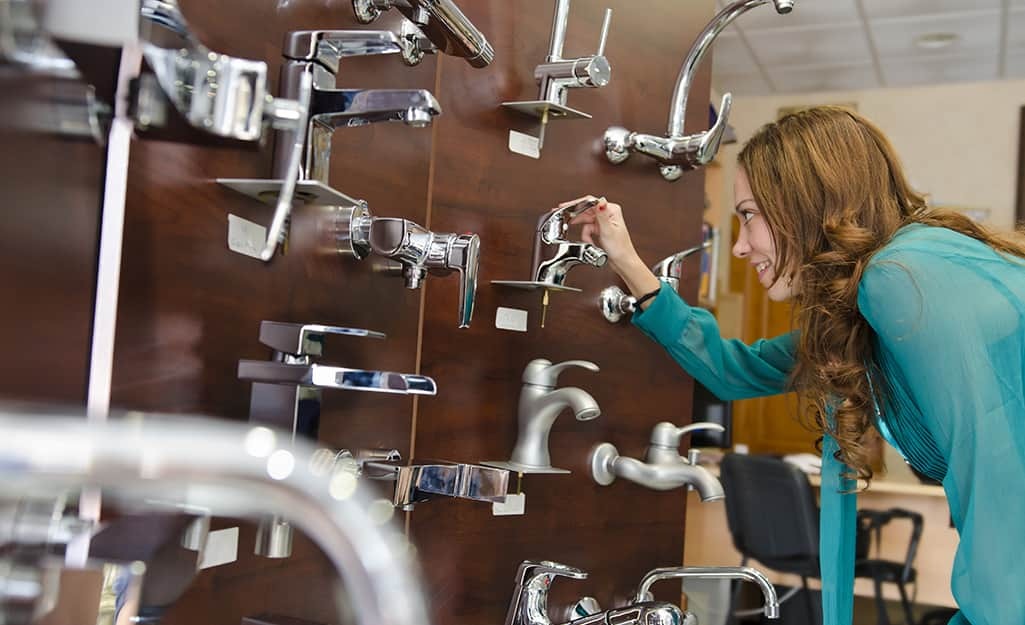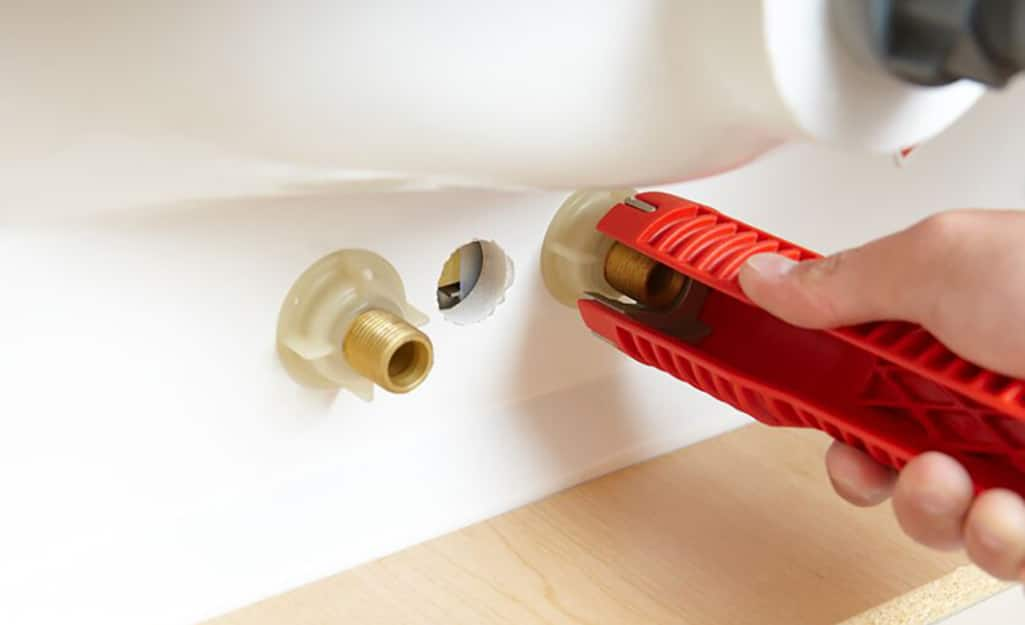In many cases, you can install a bathroom faucet in less time than it takes to select one from the broad range of fixtures that are available for your sink.
The number of holes in your sink or vanity top can influence the style of bathroom faucets you choose. However, the basic installation process is similar whether you’re installing a single-handle faucet, a centerset faucet or a widespread variety.
This guide will teach you how to install a bath faucet.
1 Choose the Right Faucet

Before installing a bath faucet, find the right one for you and your needs. Sinks with 3 holes that measure 4″ between holes should use a centerset faucet. Alternatively a single hole faucet with deck plate to cover the vacant holes. Faucets for this type of configuration have the spout, handles, valves and mixing tee within the fixture. Sinks with three holes that measure 4-inches between holes should use a centerset faucet. Alternatively, a single hole faucet with deck plate willcover the vacant holes.
When the sink (or vanity top) holes measure 8 inches apart between holes, consider a widespread faucet. This type has one handle and valve for cold water and one handle and valve for hot water. The mixing tee is installed separately beneath the spout.
The new faucet will come with the parts needed for installation, except for the lines used to connect the valves to the water supply. Unless you are replacing an existing wall-mounted faucet, this type of faucet will require rerouting plumbing behind the wall.
2 Shut Off the Water

- When beginning bathroom sink faucet installation, remove all items from under the sink. Place a bucket, pan or rags under the work area to catch any water from disconnected lines.
- Turn off the hot- and cold-water supply lines at the shut-off valves beneath the sink. If there are no shut-off valves, turn off the main water supply.
- Turn the faucet on to release pressure in the water lines and let drip until empty.
Tip: To make installing a bath faucet safer and more comfortable, use towels to cushion your back and wear eye protection.
3 Remove the Old Faucet

- Use an adjustable wrench to disconnect the water supply lines.
- Remove the faucet mounting nuts from underneath the sink, using a basin wrench for hard-to-reach areas.
- Use a penetrating lubricant for any stubborn nuts that have corrosion.
- Unhook the lift rod for the drain stopper.
- When disconnected, lift the faucet fixture from the top of the sink.
- Use a putty knife, if needed, to assist prying the old faucet from the old sealant or gasket.
- Scrape the remaining sealant remnants from the sink surface.
- Clean the surface around the holes with a cleaner appropriate for your sink type. Mineral spirits or rubbing alcohol can be used to remove sealant residue.
Tip: Some bathroom sink faucets include a matching drain collar around the drain hole. Use tongue-and-groove pliers to remove the old collar. Unscrew it from the drain rim beneath the sink after disconnecting the P-trap.
4 Assemble and Place the New Faucet

Note: When learning how to install a bathroom faucet or change a bathroom sink faucet, always use the instructions enclosed with your particular faucet, as specific steps can vary between models.
- Assemble the faucet following the manufacturer’s instructions.
- Apply a bead of plumber’s putty or silicone caulk around the bottom of the faucet or the faucet holes on top of the sink, if called for in your instructions.
- Place the faucet gasket over the tailpieces so that it is between the sink and the base of the faucet.
- Insert the faucet assembly into the mounting holes so that the base is parallel to the back of the sink, and press the faucet down firmly into the sealant.
5 Install the Basin Nuts

- Thread a washer and basin nut onto the valve tailpieces from underneath the sink.
- Tighten the nuts, alternating from one side to the other, to draw the faucet body evenly over the gasket.
- Do not tighten all the way.
6 Center the Faucet Body

- Measure from both sides of the faucet body and adjust as necessary so that it’s centered on the top of the bathroom sink.
7 Tighten the Basin Nuts

- From beneath the sink, tighten the mounting nuts to keep the faucet in place.
- Use a basin wrench or a sink installer tool, being careful to not over-tighten the nuts.
- Wipe away any excess putty from around the faucet base.
- Apply clear silicone to the underside of the drain collar.
- Screw it into place on the drain rim. Wipe away excess silicone.
- Install pop-up stopper and its lift rod according to the manufacturer’s instructions.
8 Connect Water Supply and Check For Leaks

- Attach the supply lines to the faucet. Tighten (but not over-tighten) using an adjustable wrench.
- Turn the water back on at the supply line valves.
- Remove the aerator on the spout.
- Turn on the faucet and allow both hot and cold water to flush the system for one minute.
- Check for leaks.
- Replace the aerator.
